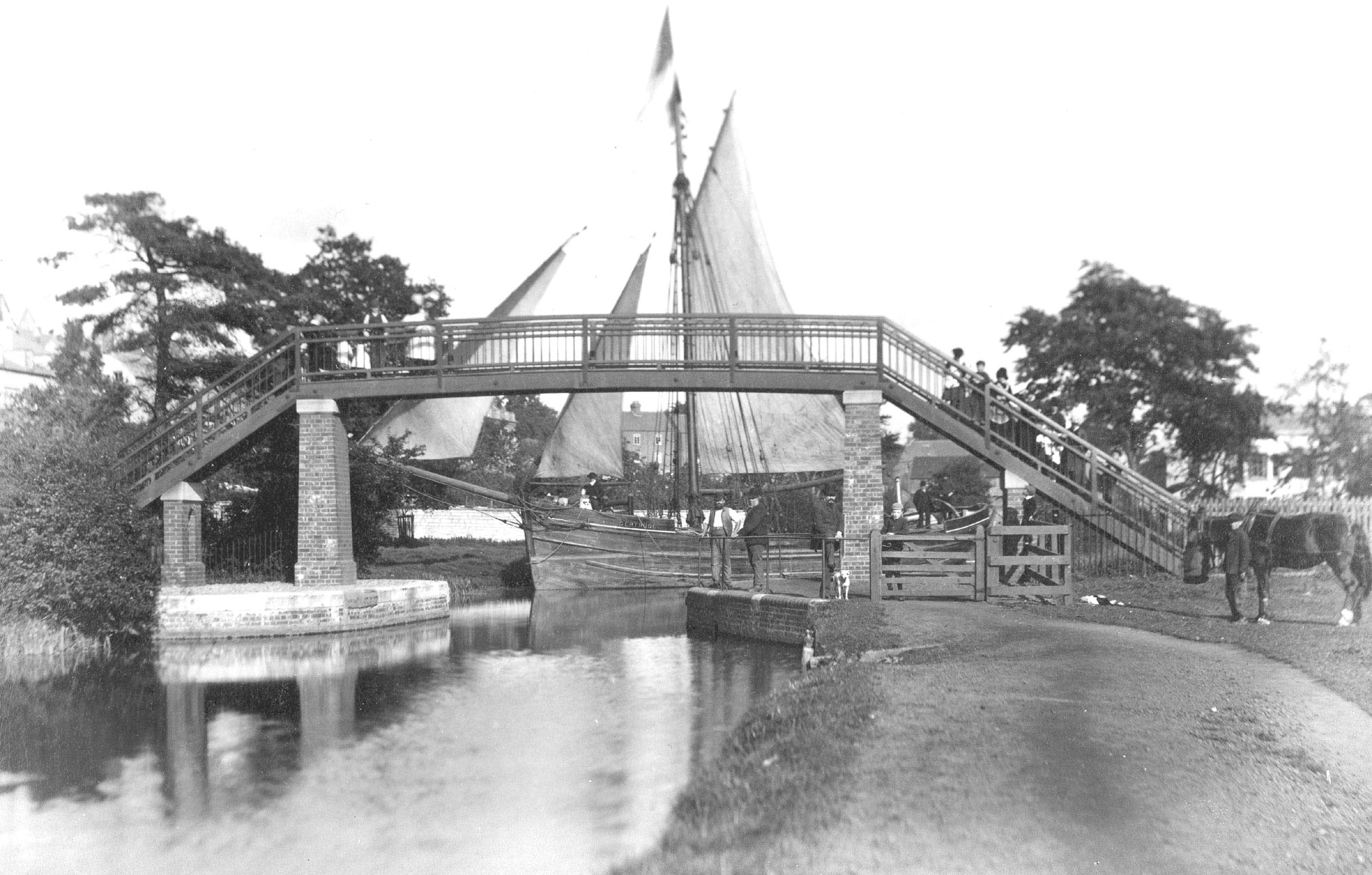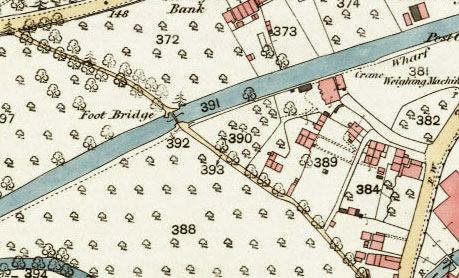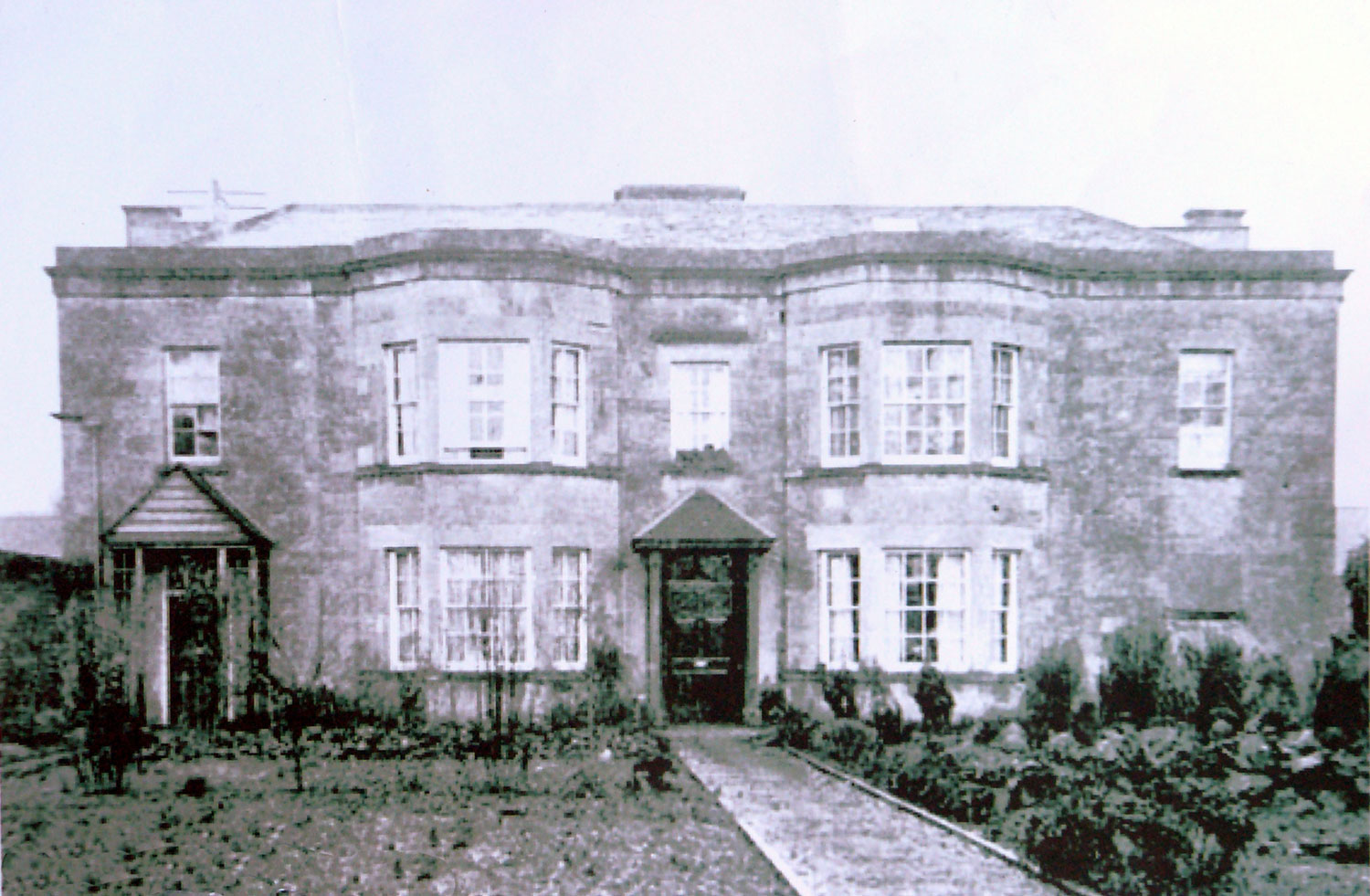

The high-level bridge pictured was erected in 1885 to carry a footpath from Westward Road on the hill down to the ancient crossing of the River Frome at Dudbridge. It replaced an earlier low-level swing bridge which suffered damage by being forced open by barges. It is likely that the illustration records the completion of the bridge, with the sails raised on the barge Gertrude to add interest to the picture.
A replacement high-level bridge installed in 1908 lasted until the canal closed in 1954, and then it was lowered as there was no longer a right of navigation. The current bridge, built c2002 in conjunction with a local housing development, is the fifth structure to carry the ancient right of way. For memories of life around Hilly Orchard in the 1930s, visit John Stockbridge Remembering Dudbridge.


The open field to the south of Hilly Orchard Bridge was once an orchard and later a playing field for the staff of a local factory. Before the days of public baths, the towpath was a popular place for swimming, and some local people brought their own soap so they could also have a good wash.
In 2004, the area was dedicated for community use and was later granted the status of a Queen Elizabeth II ‘Field in Trust’. From the field there is a distant view of the tower of the former Dudbridge Mill where fine woollen cloth was made until 1933.


The big house next to the towpath east of Hilly Orchard Bridge was originally the home of Thomas Grazebook, one of the first traders operating barges from the adjoining Dudbridge Wharf in the 1780s. It had two parlours, five lodging rooms, stabling, a coach house and a paddock planted with fruit trees.
In the early twentieth century, the house was divided into three, and the other buildings on the estate were converted to small houses, all collectively known as Gladfield Gardens. After the canal closed in 1954, the occupants of the northern end of the house enclosed ‘their’ bit of towpath, using the old towpath gate at the west end of Dudbridge Wharf to block access. Later the restored path was built around the enclosed length on what had formerly been part of the canal bed, and the old towpath gate is still in situ.
Low-level bridge damaged by barges from D1180/9/6 p92.
Completion of the first high-level bridge from Stroud Journal 12 Sep 1885 p5.
Replacement high-level bridge from D1180/1/8 p109.
Correspondence about lowering the high-level bridge in D1180/acc13370/box1/4.
Installation of current high-level bridge noted in Trow Dec 2001.
For history of Dudbridge Mill, visit www.british-history.ac.uk/vch/glos/vol11/pp224-230.
For more about the playing field, see the nearby information board.
Description of Gladfield House from Cheltenham Chronicle 12 Apr 1810 p1.